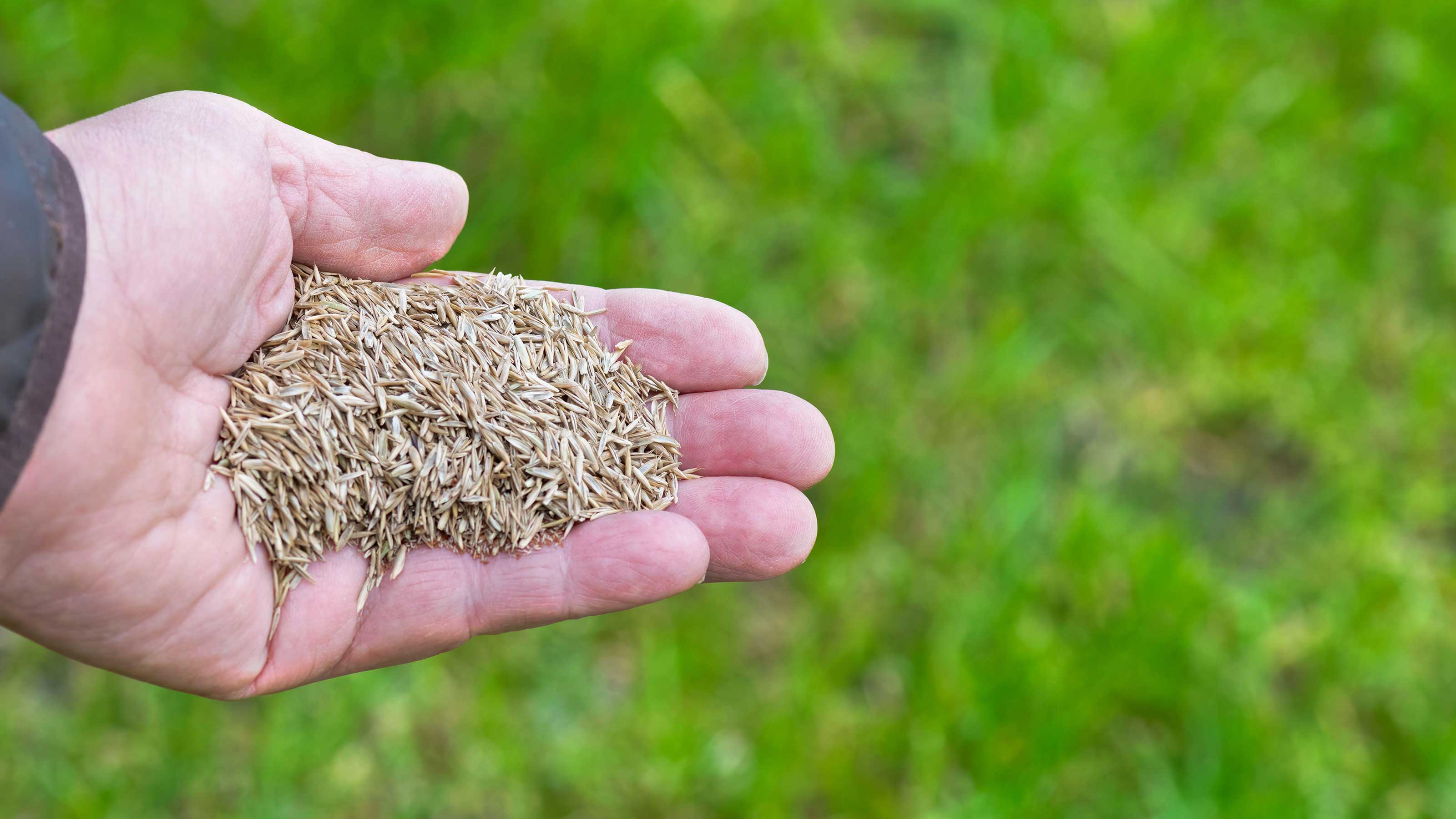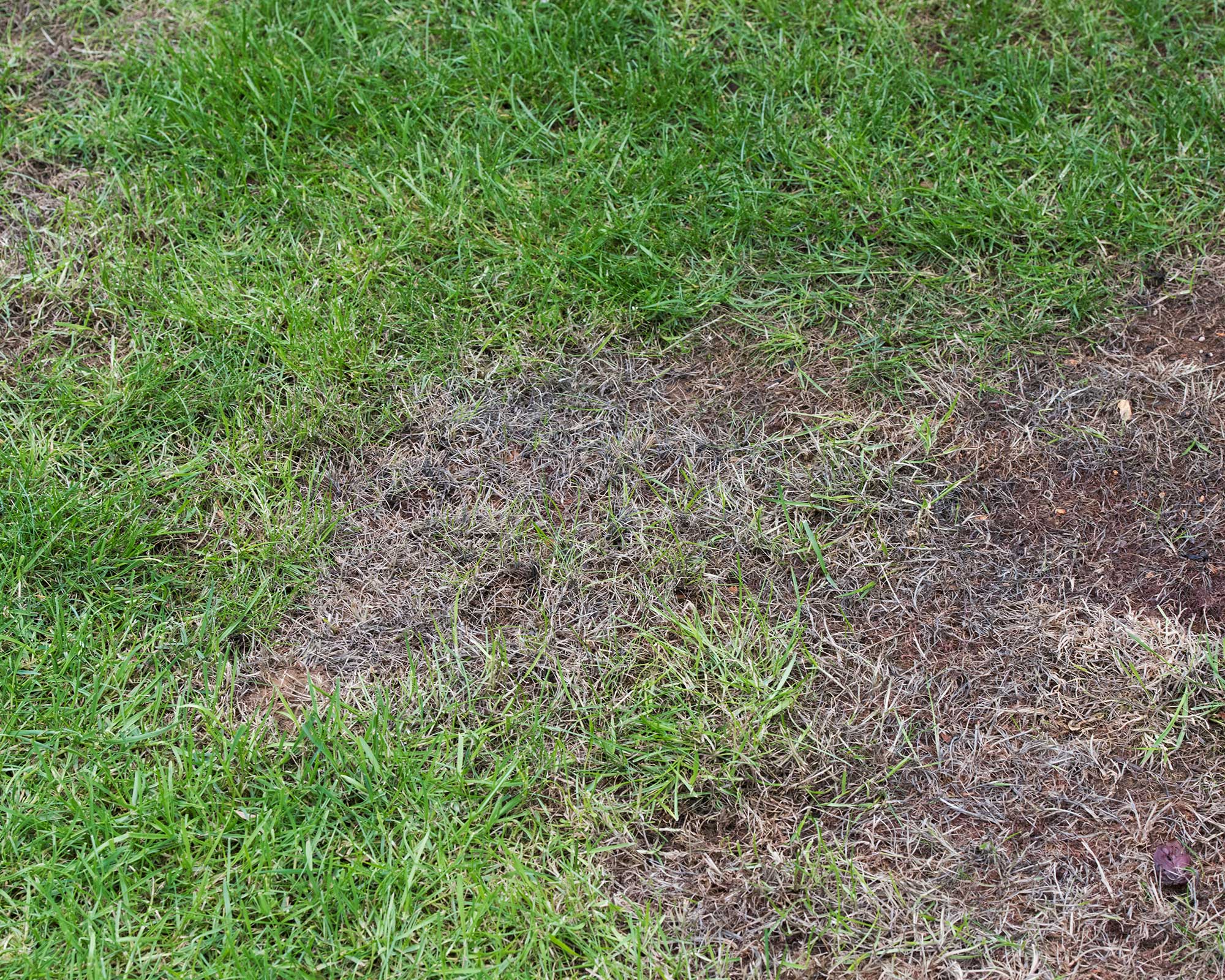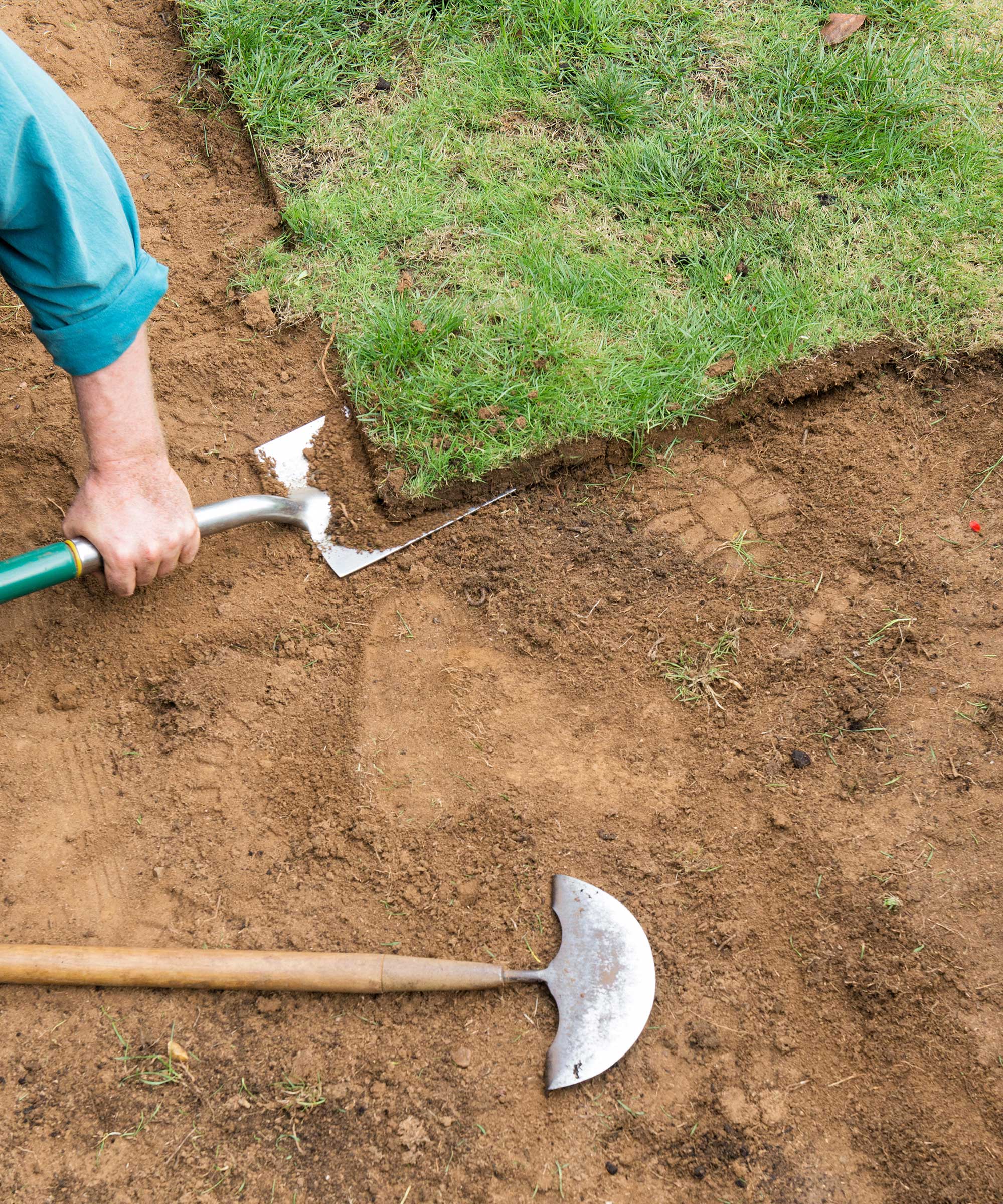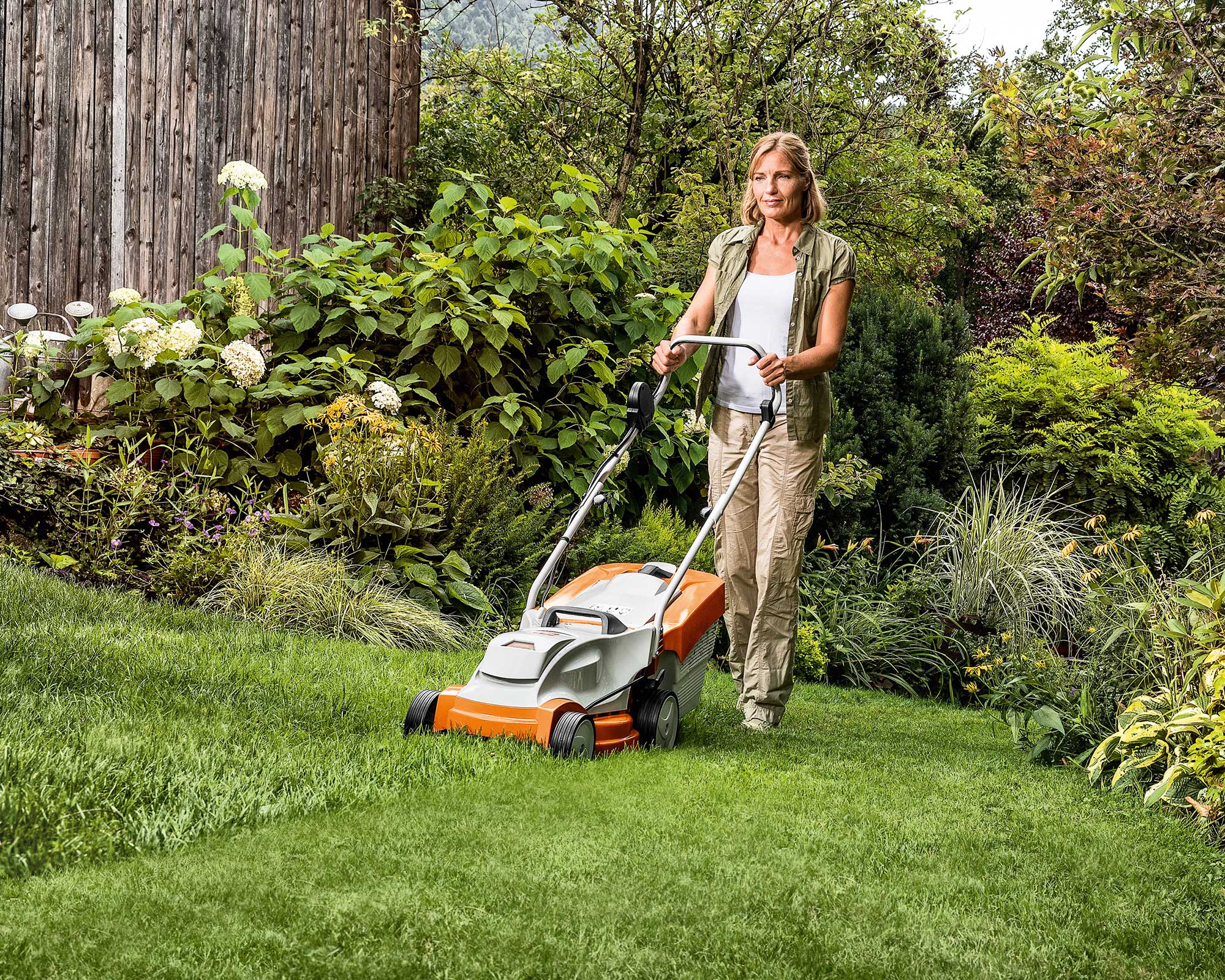How to repair lawn patches with seed: simple steps for healthy grass
Our straightforward advice on how to repair lawn patches will help you get your turf back to its former glory


Is your lawn looking a little threadbare? Don't worry – it's easy to repair lawn patches with new grass seed to get it looking lush and green again.
A lawn covered in dead, brown spots is never a good look, even if it's surrounded by smart lawn edging. Unfortunately, it's a common problem, especially in the height of summer when the grass can become parched, or if you have children or pets running around. Patches can also form due to over-mowing, over-raking or heavy lawn scarifying, explains Andy Wain, Head Gardener at Euridge Manor and spokesperson for Stihl. 'When they appear, it is best to act quickly to prevent them from becoming a breeding ground for weeds,' he adds. 'The best way to restore bald patches is reseeding them.'
You'll be pleased to hear that this process is cheap and totally straightforward. We've rounded up all the tips you need to know.
How to repair lawn patches with seed: 6 easy steps
lf your turf is looking patchy, rather than matching up to the luscious lawn ideas you had in mind, then it's time to grab the grass seed and get sowing. It's super easy to do:
- Remove any fallen leaves and other debris from your lawn using one of the best garden rakes.
- The RHS suggests to cut out the damaged area of turf with a half moon edging iron, then lightly fork the soil beneath.
- Scatter a layer of topsoil onto the bare patch.
- Sprinkle grass seed over the layer of topsoil. Homebase advises to check that the seeds are close enough together so no patches are left, but spread out enough for the grass to grow. You should be able to find the recommended application rates on the packet, but on average, a handful of seeds should be sufficient to cover a 3.2ft x 3.2ft (1m x 1m) area.
- Cover the seeds with a light sprinkling of topsoil, to help protect it from birds. Take care not to block all the light from the seeds. If you want to go a step further, the Amateur Gardening team suggest to peg down netting to deter both birds and cats.
- Water in the seeds using a watering can fitted with a fine rose. Keep them watered as they grow.
Top tip: Apply a high phosphate food as soon as the seeds have germinated for best results, as suggests Homebase.

How do you repair lawn edges?
Lawn edges looking a little ragged? There's a quick and easy fix, as the RHS explains:
- Grab your half moon edging iron and best garden spade and dig out the damaged area with straight, square cuts on three sides. Then prepare the base as above – by lightly forking the soil and adding a layer of topsoil.
- Turn the damaged square around 180°. Then replace it so that the cut edge aligns with the lawn edge and the damaged edge is facing inwards.
- Cut and remove the damaged area and reseed as above.
When is the best time to repair lawn patches?
The best time to repair lawn patches is in spring or fall, when the weather is damp and cool. This will give the new grass a good chance to establish.

Which seed should you use to repair lawn patches?
There are broadly three types of grass seed mixes that you can choose from, as Homebase explains. Hard-wearing lawn mixes tend to include ryegrass and are good if you're on the lookout for family garden ideas. Premium lawn mixes are a blend of a finer-textured grass seed for a high-quality result. Or, you can purchase a mix that's suitable for shadier gardens which isn't as reliant on direct sunlight as other blends.
When repairing lawn patches, try to use the same seed as you used for the rest of your lawn to avoid a variation of appearance.

Other ways to repair lawn patches
Short on time? You can repair your lawn patches with turf rather than seed for instant results. If you're using new turf, be sure to lay it as soon as possible once you have it, to prevent it from drying out.
- Prepare the area as above – by cutting out the damaged turf, lightly forking the soil, and adding a layer of topsoil.
- Cut out an identical-sized piece of healthy turf from another area of the garden where it will not be missed, says the RHS. Alternatively, use new turf.
- Place the turf onto the bare patch, and brush a sandy lawn top-dressing around the edges to fill any gaps.
- Push the turf down then water in with a watering can fitted with a fine rose.

Whether you want to repair lawn patches by reseeding or turfing, it's important to give it a chance to establish before you mow it.
Even with the best lawn mower, you'll need to wait until your newly sown grass is at least 2.4–2.8in tall (around 6–7cm). If you've used turf, you'll need to wait until the grass is 2–2.4in (5–6cm) tall. Don't set the blades too low – you'll want to remove no more than 25% on the first cut, say the experts at Premier Lawns.

Most of us want to know how to get rid of lawn weeds in our garden, however one weed in particular – clover – can be rather beneficial for avoiding brown patches in your lawn.
Bob Flowerdew, Amateur Gardening's organic gardening expert, explains how clover creates dark green patches in a lawn as it adds nitrogen to the soil. True, if you have just a few patches, it will look like green blobs all over your turf. But, it's easy to eliminate these – and brown blobs as well – by sowing clover everywhere, he says. As a result, the lawn will stay green more uniformly and without the need for excessive watering throughout summer.
Fancy a lower maintenance groundcover for your yard? We've rounded up lots of alternatives to grass that are practical and stylish in our dedicated guide.

The garden was always a big part of Holly's life growing up, as was the surrounding New Forest where she lived. Her appreciation for the great outdoors has only grown since then. She's been an allotment keeper, a professional gardener, and a botanical illustrator – plants are her passion.
